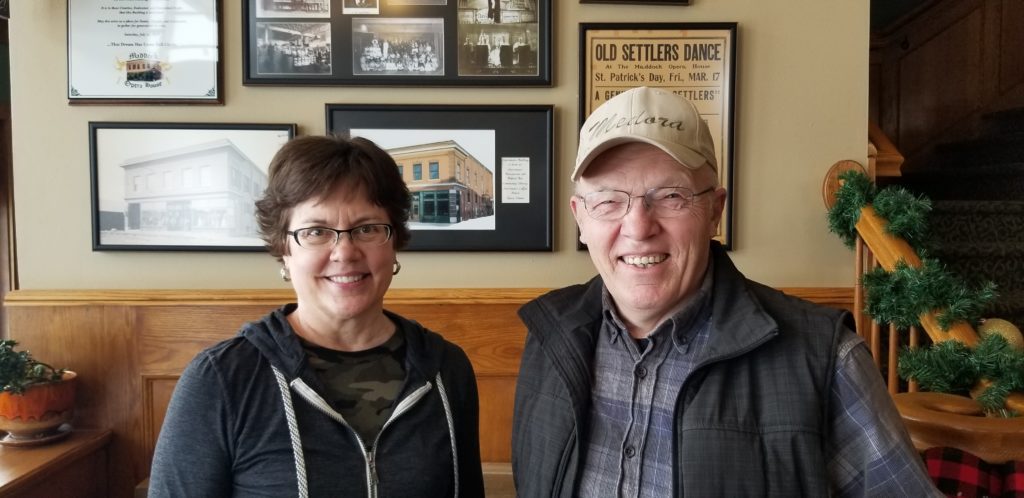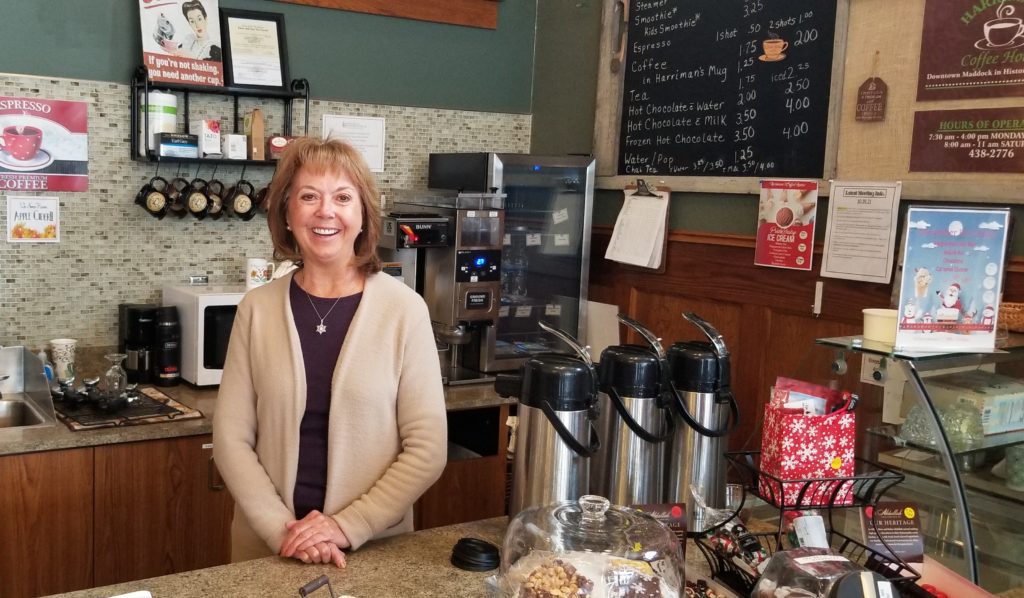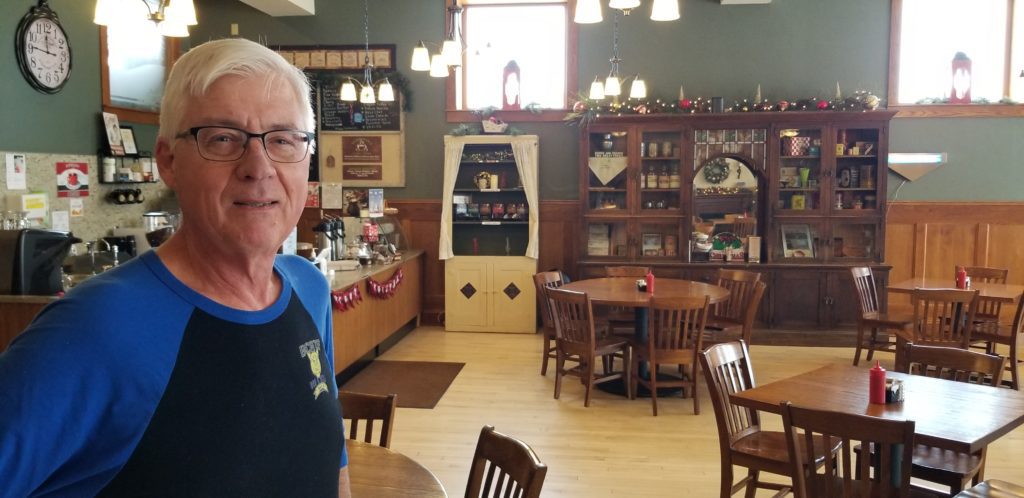

MADDOCK – The building had fallen into disrepair, an eyesore destined to become another casualty of time and neglect, common to early day structures in rural communities across North Dakota. Many have long since disappeared, gone to rubble, taking a slice of history with them.
Built in 1905 and once a proud focal point on this city’s Main Street, the Maddock Opera House had long outlived its expected life. Abandoned for nearly 30 years, the building’s demise was hastened by the winds of time. A leaky roof accelerated the inevitable. The once stately structure was reduced to a sad, crumbling reminder of days long past, an era when small towns flourished, each with their own identity and contribution to life on the prairie.
The idea of demolishing what remained of the old Opera House didn’t sit well with a few residents of the city and area. Were they to remain idle spectators and wait for the final curtain to be drawn, or hold a casting call? They chose the latter.
“We bought the building from the city for a dollar in 2009,” said Paul Backstrom, Maddock, an original member of the Maddock Opera House Association. “That’s how it started.”
“There was a lot of skepticism. I think a lot of people thought we were crazy,” remarked Rachel Markestad, Maddock. “It had fallen into ruins, sitting vacant, and deteriorating more every year.”

In 1905 the building housed L. M. Herriman’s department store on the main floor. Upstairs in the two-story building, accessible by a separate entrance, was the Maddock Opera House, complete with ticket window, concession area, stage, and hardwood floor seating area.
“An opera house back then was more like a community center, not considered performance centers necessarily,” explained Markestad. “It was where people gathered and had dances and plays and things like that.”
No matter what use the Opera House Association had in mind for the facility, they were facing a seemingly impossible, if not improbable, task of returning the Opera House to at least a resemblance of what it once was. It was a daunting task, even for those familiar with doing renovations.
“It was hard to see beyond the carnage of how everything looked,” recalled Markestad. “Now it is a place people gather. I don’t know what we’d do without it.”

“At the first meeting in 2009 there was 10 to 12 of us,” said Backstrom. “We started with the intent, the main goal, to fix up the upstairs. Then what do you do with the rest of the building? One thing we learned was that you can’t fix up a building just for the sake of fixing it up. You have to have a purpose.”
Several ideas were suggested and examined as the association debated on how best to proceed. A turning point was the hiring of an interior designer with experience in similar projects. Foremost in the renovation project was retaining as much of the original look of the era as possible.
Examples include the hardwood floors on both levels, sidewall lighting in the Opera House, a grand staircase leading from the lower level to the doors of the Opera House above. Not even the color selection of paint was overlooked.
“It’s been a lot of blood, sweat, and tears. This place was just a wreck,” said Backstrom from the comfort of a chair at the restaurant level. “Our story shows how to get a group of people together. You need some dreamers.”
One of the first ideas for the main floor was the addition of a coffee shop, which many felt would be a great addition to Maddock. But who would start one? Would it be financially viable? Would it last?

Enter enthusiastic members of the community – 29 of them. They formed a limited liability company, run by volunteers, and opened the coffee shop in June 2013. Two months later the City Library moved into the building. Then, in September 2013, Harriman’s Restaurant, named after the building’s original owner, began serving customers.
“We wanted a destination restaurant. We knew we needed that, just didn’t know if we could accomplish it,” said Backstrom while watching customers come through the door and sit down at tables, eager for a nice lunch. “I think we have, with lots of help.”

Jim Walter operates the restaurant, leasing the space from the Maddock Opera House Association. Harriman’s is exactly what the association was hoping for, a restaurant that wasn’t typical of many small-town cafés.
The menu and décor have proven to be very appealing for customers, both locals and those that make an extra effort to travel just a bit off the beaten path. Many have the look of wonderment when they first set foot inside the building, surprised that a rural community boasts such a unique facility.
The project was made possible by local donors, many of whom watched the progress of the renovation and began to see possibilities emerge from the dedicated effort of association members.
“It was a $1.5-million project. About $400 thousand is grants. The rest is all local donors.” Paul Backstrom, Maddock Opera House Association
“It was a $1.5-million project. About $400 thousand is grants. The rest is all local donors,” stated Backstrom. “We had people who lived here all their life and never knew this existed. It’s a neat part of our town’s history. Neat to resurrect.”
“The upper floor is used quite often for parties, meetings, and whatever,” added Markestad. “We do have a schedule of activities upstairs for the whole year, several events. People can buy tickets online.”
A complete listing of events, dates, and times can be found at maddockoperahouse.com.